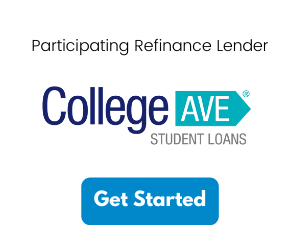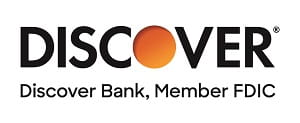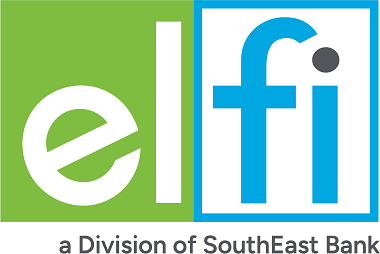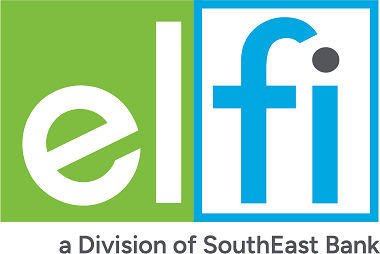Embarking on the journey of student loans might appear overwhelming, yet rest assured, we are here to guide you through each stage. The pivotal initial step involves completing the Free Application for Federal Student Aid (FAFSA®). This application not only assesses your eligibility for federal student loans but also influences your qualification for gift-aid such as grants and scholarships. Despite receiving gift-aid, you may find the need for supplementary financial support.
Regardless of whether you're focusing on private student loans options exclusively, completing the FAFSA is highly recommended. You could uncover more financial aid options from your school or state that were previously unknown to you. It's important to note that criteria for need-based financial aid can vary, and there are also merit-based alternatives worth exploring.
Student loans are instrumental in covering educational expenses. Although private student loans from banks and credit unions may be appealing, it's prudent to explore all avenues for gift-aid and federal student loans first. We'll guide you through this process, enabling you to make informed decisions about financing your education.
How to Apply for a Student Loan
If you’re going to borrow a student loan, your first step would be to complete the required loan applications for a student loan. The application required for a federal student loan is the FAFSA. And the application for a private student loan would be the application required by your prospective lender—however, it is recommended that you complete the FAFSA to determine your eligibility for federal aid first.
By filling out your FAFSA, you can be matched up with potential grants, scholarships, or loans. Though the application can be a bit daunting to complete with questions regarding income, tax returns, and other financial information, the FAFSA uses this information to assess your financial need to attend school. With a parent and necessary documentation, it typically takes about 45 minutes to an hour to complete the application online or using the mobile app.
Filling out the FAFSA
Useful information for you and your parent to have on hand when submitting the FAFSA application:
• Social security number
• Driver’s license
• Federal income tax information for the appropriate year (ex. 2022-2023 FAFSA requires tax records from 2020)
• Records of untaxed income
• Records of your assets
• A list of schools you are considering
Your FAFSA enables you to be considered for federal aid. This is a free application, so even if you don’t think you will be awarded aid, you may be surprised with what financial options are available to you. Your college’s financial aid office uses the information from the FAFSA to determine your eligibility for financial aid for the upcoming year. Your financial need is calculated by subtracting your expected family contribution (EFC) (which is determined by your FAFSA), from your school’s set cost of attendance (COA) for your program. The FAFSA is your application for federal grants, federal student loans, many state financial aid opportunities, and may be used by your school for institutional grants and scholarships.
FAFSA Eligibility
To qualify for federal student loans through the FAFSA, you need to meet the basic eligibility requirements for financial aid. You also need to meet the eligibility requirements specific for federal student loans, which includes being enrolled at least half time in an eligible program. As you continue to attend school more than half-time, your college will make an annual assessment of your loan eligibility for the upcoming academic year. Your school will look to see what your annual loan limits are, and where you are with your aggregate (total) loan balances.
With this information, they will determine the loans to be offered to you and include them on your financial aid award letter. If the amount of federal student loans isn’t enough, you will want to set up some time with the financial aid office to go over your financial aid award letter and discuss your situation. Be ready to explain any changes in your financial status to best help the financial aid office find the right options for you. If your school is unable to increase your financial aid award when needed, your next best option may be private student loans.
Federal Student Loans
The U.S. Department of Education offers loans through the William D. Ford Federal Direct Loan Program. Direct Loans are offered to you based on the information you provided on your FAFSA. Each loan type has different eligibility requirements. Federal student loans come with benefits that may be valuable to you depending on your circumstances. You should do thorough research to understand what you are committing to and what your repayment options will be before accepting any loans as they will be a part of your life for the next ten years or more once you begin repayment.
Federal Direct Loans:
1. Direct Subsidized Loan
This type of loan is only available to undergraduate students. Eligibility is determined based upon demonstrated financial need. With a subsidized loan, the federal government pays the interest on your loan while you are enrolled at least half-time, during your grace period, and during periods of authorized deferment. The government paying your interest is also known as the “subsidy” on this loan.
2. Direct Unsubsidized Loans
Unsubsidized loans are available to both graduate and undergraduate students and you do not need to demonstrate financial need to qualify. With a Direct Unsubsidized Loan, you are responsible for the interest that accrues. The government does not provide a subsidy on this loan.
3. Direct PLUS Loans
These loans can be made to both graduate or professional students, in addition to parents of a dependent (as determined by the student’s FAFSA) undergraduate student. Direct PLUS Loans are available to help pay for school expenses that are not covered by other financial aid.
Your eligibility is not based on the student’s financial need, but the borrower will have their credit checked by the U.S. Department of Education. Potential borrowers with adverse credit history as defined by the U.S. Department of Education may be denied a PLUS loan. However, borrowers denied a Direct PLUS loan will have the ability to submit an extenuating circumstances appeal, or the option to re-apply with a cosigner who does not have adverse credit. If a parent is denied a Direct Parent PLUS loan, their dependent undergraduate student will be eligible for the higher annual loan limits for a Direct Unsubsidized Loan, which is offered to independent undergraduate students. To be eligible for these higher loan limits each academic year the student is enrolled, the parent will need to be denied a Direct PLUS Loan every year.
More >>> Student Loan Options for Borrowers with Bad CreditFederal Student Loan Benefits
The Federal Direct Loan Program offers benefits that are not always an available option with private student loans.
Repayment Plan Options
• When it comes to student loan repayment, federal student loans have multiple options. It makes it easy for a student to find a repayment plan that works with their budget. The default repayment plan is a 10-year Standard repayment plan, but there are other options, including graduated repayment plans (which the payments start small and increase over time), and repayment plans which base your payments on your income and family size.
Income Driven Payment Plans
• Income Driven Repayment plans base your payments on your income and family size. The goal being to make repayment affordable depending on your specific circumstance. These plans range from 10%-20% of your discretionary income.
Most Federal Loans Do Not Require Credit Checks
• Most federal student loans do not require a credit check, which is helpful for recently graduated high school students who typically have little to no credit history. If you plan to borrow a Direct PLUS Loan, the U.S. Department of Education will ask you to authorize a credit check. The Direct PLUS Loan credit check is only checking to see if you have adverse credit, as defined by the U.S. Department of Education. While trying to determine if you have adverse credit, the Department of ED will not look at your credit score, debt-to-income ratio, or your work history.
More>>>Federal Student Loan Repayment Plans
Private Student Loans
Private student loans are available to fill funding gaps when your other financial resources come up short. It is recommended that you research the best student loan option for you and your circumstance. Know that many private student loan lenders do not charge origination fees, unlike federal student loans. Private lenders can offer competitive interest rates as well as other features and benefits that may be of value to you.

























